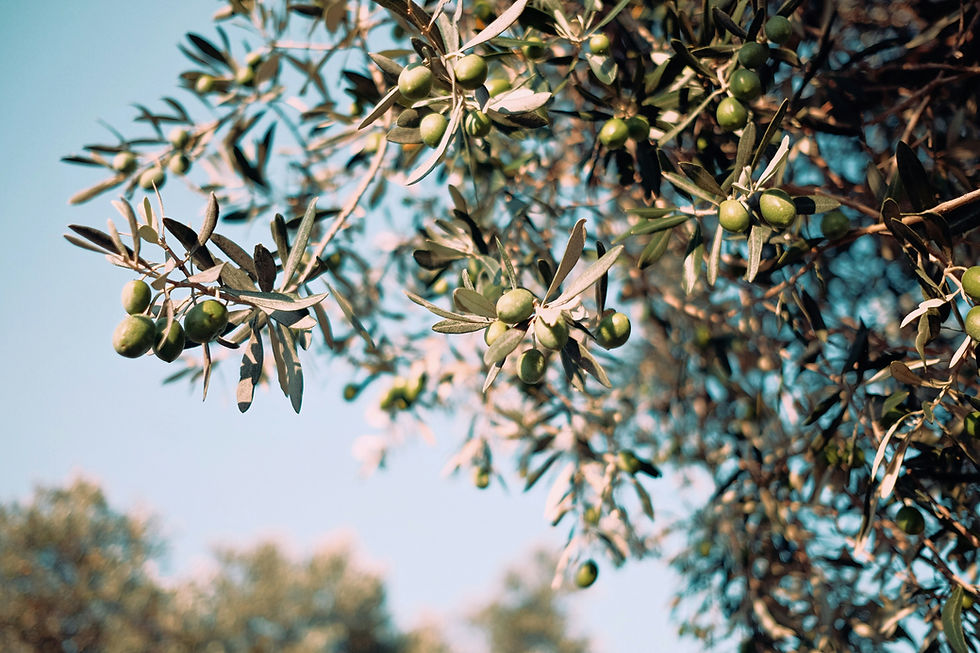The Use of Microclimates in Your Garden
- Wende Brand

- Mar 24
- 3 min read

When we think about gardening, we often imagine a standard landscape where the same plants thrive in uniform conditions. However, nature is far more complex and beautiful! In Alentejo, Portugal, the interplay between hills, valleys, and forest vegetation creates a fascinating array of microclimates. These variations open a world of opportunities for gardeners eager to cultivate unique plants. Let’s explore how you can harness the power of microclimates in your garden!
Understanding Microclimates
Microclimates are specific areas within your garden where climate conditions differ from those around them. Factors such as elevation, surrounding vegetation, and water sources contribute to these local weather variations. For example, in Alentejo, hills may rarely face frost during winter, while nearby valleys can drop to freezing temperatures at night.
This difference can greatly impact your gardening success. By understanding the specific climate conditions in your garden, you can choose plants that will thrive in those unique environments.
The Impact of Elevation
Elevation plays a crucial role in determining what can grow and where. In Alentejo, higher elevations typically experience milder conditions with less frost. This opens the door to exotic options like bananas and macadamias in the light forests on hillsides. Research shows that some microclimates can extend the growing season by up to 30 days.
Planting on slopes not only protects these plants from harsh winter weather but also helps create a thriving ecosystem. Imagine the aroma of bananas mixing with the sound of rustling macadamia leaves as you wander through your garden!
Utilizing Valley Conditions
Valleys present their own challenges and opportunities. While frost can be a concern at night, they offer rich, fertile soil with ample moisture. This makes them perfect for growing hardy fruits like apples and pears. Certain varieties can withstand night frosts and still produce excellent yields. For instance, the Fuji apple is known for its resilience and sweet flavor.
By selecting frost-resistant varieties and applying good watering practices, you can maximize the benefits of these unique valley conditions. Just think about picking sweet and crisp apples in the middle of winter!
Harnessing Forest Microclimates
Another exciting aspect of gardening in Alentejo is how forest areas can create their own microclimates. During hot summer days, shaded spots under trees maintain cooler temperatures, while in colder months, they remain slightly warmer. This allows you to grow a diverse selection of plants, from temperate herbs to subtropical fruits.
Imagine a food forest where you cultivate tropical plants like mangoes alongside Mediterranean herbs like basil and oregano. This diversity not only enhances the beauty of your garden but also improves soil health and helps control pests naturally.
Water Retention Techniques
Water is essential for successful gardening, but managing it can be tricky, especially on sloped areas. To ensure consistent moisture, consider implementing water retention techniques like swales and terracing. These methods can capture and hold rainwater, providing a reliable water source for your plants throughout the dry season.
For instance, creating a terraced garden can increase water retention by up to 40%, which is crucial during drought periods. This gardening strategy not only nurtures your plants but also contributes to sustainable agricultural practices.
Choosing the Right Plants
After understanding microclimates in Alentejo, it’s time to choose the right plants. Look for varieties that are well-suited to your specific environment. On the slopes, consider planting bananas and macadamias alongside herbs such as rosemary and thyme, which appreciates similar conditions.
In the valleys, think about cultivating a diverse range of fruits like apples, pears, and even berries. It's important to experiment and find which combinations work best for you. Each successful planting not only improves your gardening skills but also deepens your connection to the land.
Embracing Biodiversity in Your Garden
With the remarkable potential that microclimates offer, embracing biodiversity can create a thriving ecosystem in your garden. When combined thoughtfully, various plant species enhance resilience against pests and diseases and promote a rich soil biome.
Consider companion planting, where certain plants benefit one another, such as using marigolds to deter pests from vegetables. By creating a diverse garden, you can develop a self-sustaining system that benefits from the natural synergy of different plants.
The Bottom Line
The joy of gardening, especially in a unique location like Alentejo, lies in the microclimates that shape the landscape. By recognizing and leveraging these distinct conditions, you can cultivate an exciting array of plants, transforming your garden into a space of culinary and visual delight.
So roll up your sleeves, get your hands in the soil, and explore the incredible microclimates in your own garden. Whether you’re planting bananas on the hills or harvesting apples from frost-touched valleys, your gardening adventures can be endless. Happy gardening!




Comments